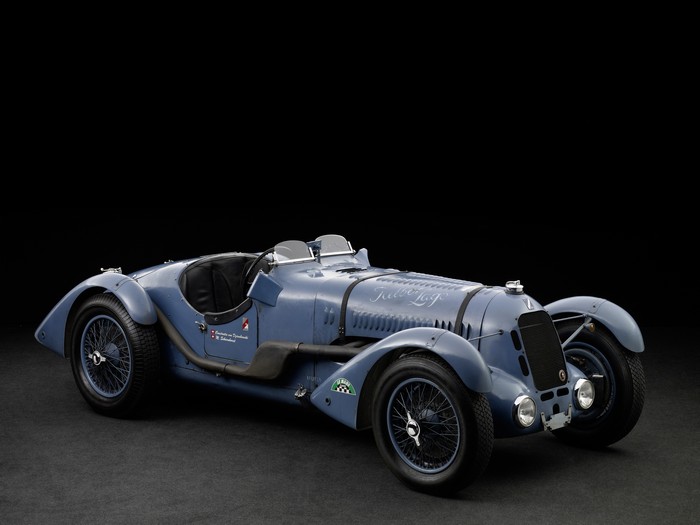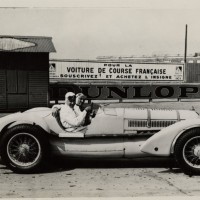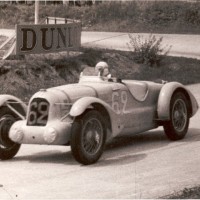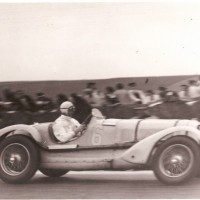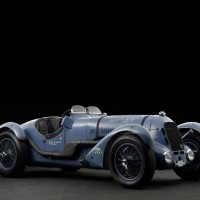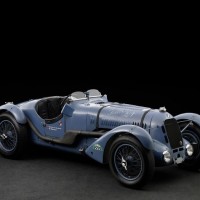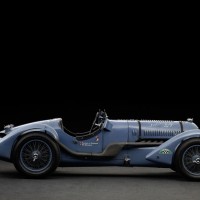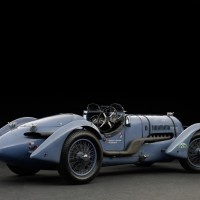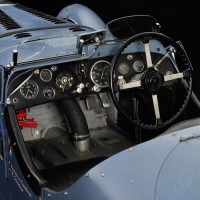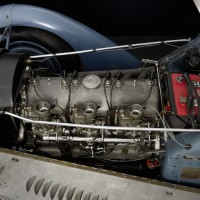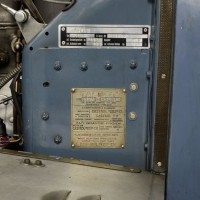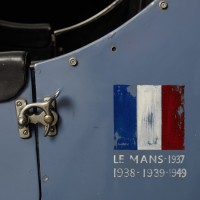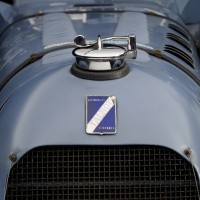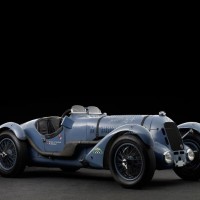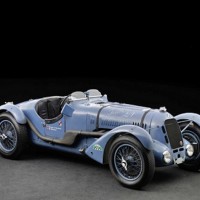SCM Analysis
Detailing
| Vehicle: | 1936 Talbot-Lago T150C racer |
| Number Produced: | Six |
| Original List Price: | N/A |
| Chassis Number Location: | Plate on firewall, left side |
| Engine Number Location: | Left side of block under rocker cover |
This car, Lot 342, sold for $1,995,001, including buyer’s premium, at Artcurial’s Paris auction on February 8, 2013.
There is an old English saying that goes, “When your guests start talking about how honest they are, it’s time to count the silverware.” That really doesn’t apply here, yet the auction company’s decision to publish an entire separate booklet and devote a mind-numbing arsenal of words to detail the history of the car gave me pause.
The English translation of the catalog entry ran over 3,300 words (this profile is about 1,400, for comparison), and you have to wonder why they felt they had to say so much. Consider a hypothetical alternate approach: “1963 Ferrari GTO, Chassis #XXXX, perfect; start bidding.”
The point here is, the greater the car, the less you need to explain it. In their defense, I acknowledge that this is a relatively obscure car with a very long and complicated history, so if you want more than the few true cognoscenti of the marque to raise their paddles, you’ll need to explain the car, but still….
A vivid history…
Let me give you a Reader’s Digest summary of what the catalog actually said, and then we can consider the sale. In the mid-1930s, the international Grand Prix formula was so utterly dominated by the Mercedes and Auto Unions of the Third Reich that nobody else had a chance of even placing — much less winning. The French didn’t like this at all, so, starting in 1936, they made up their own rules for the French races. The French performance car builders all jumped in.
Antonio (Tony) Lago was a brilliant engineer and promoter who bought the Talbot marque out of its parent company’s bankruptcy in 1935, and he saw the new rules as an excellent opportunity to re-establish Talbot-Lago as a serious player in the performance-car business.
Lago and his engineers developed the T150 — a 4-liter upgrade of the earlier Talbot design with a hemispherical cylinder head, improved suspension, etc… — with this in mind. They started by building four competition T150s for the 1936 season — selling two of them to finance the two factory team cars.
Candidly, these cars were not particularly successful, but they paved the way for the 1937 and later T150Cs that were more competitive and, in the “Teardrop coupe” version, stunningly beautiful. These have become ultimate collectible treasures.
Today’s subject car was one of the two sold. It went to a wealthy amateur who quickly realized he shouldn’t be racing. He loaned the car to other drivers, and it became the effective Talbot B-team through 1937.
The car then passed through a few owners and races before ending up with Pierre Levegh (best known for the 1955 Le Mans catastrophe) in 1938. He raced it extensively — but with limited success — until World War II stopped things. Levegh drove the car again when racing started up after peace returned.
At the end of 1946, Levegh sold it to a Mr. Mouche, who threw the original body away and replaced it with something newer-looking before racing it extensively in 1947. Now getting thoroughly out of date and uncompetitive, the car passed through a series of owners who filled up the back positions in lots of French races, until it was retired and put into storage in 1950. It spent the next 33 years sitting in various garages and collections without being restored or used.
…with a reproduction body
In 1983, the car ended up in London in the possession of legendary vintage dealer Dan Margulies. He got it running — but couldn’t find anyone interested in buying a weird old Talbot with unknown history and an incorrect body — so he decided to have Paul Grist rebody it as a competition T150. Little did Margulies suspect that that is what this car originally was.
Finished in 1984, the car was quickly sold and started its new life as a historic-racing icon, passing through the collections and racing adventures of a virtual Who’s Who of high-profile Europeans — and along the way having its true history discovered and documented. It was restored again in 2000 before passing into the ownership of the German seller at this auction.
What drives the price of a car
Now let’s talk about value. I am told that the seller was disappointed with the result, but is this reasonable? This car sold for effectively $2 million, which is either an awful lot of money or not very much, depending on a very subjective set of considerations.
Let’s go back to collector basics: authenticity, originality, beauty, rarity, historical importance, speed and sportiness, usability, and — not least — communal lust for a certain car (is a GTO really worth that much money?). All these carry different relative values in each car’s “what’s it worth?” calculation.
It is a given that the greatest cars have all the basics in abundance — but very few actually do — and it is useful to consider what happens if a car comes up short. I will argue that as the values reach the nosebleed levels, authenticity and originality become the primary determinants, as they are the only variables that you can’t fix (historical importance and rarity aren’t variables).
As a group, Talbot T150s tick most of the boxes and are incredibly collectible. The “Teardrop” coupes are comfortably over $4 million these days, and although the open competition cars aren’t as flat-out gorgeous, they make up for much of the difference with rarity and performance and remain easily in $3 million territory for a great one.
Our subject car was unquestionably real, documented, and dripping with history, but it wasn’t completely original, and on some levels, it was presented as a bit of a fraud.
The issue rides on the car’s body. The patina is extraordinary: old, faded blue paint with the “Talbot Lago” script on the bonnet almost worn off from the years — you can almost smell the sweat and smoke of heroic drives with the clouds of war looming overhead — except that it is all reproduction. The body was built in 1984 in England with patina applied as cosmetic.
The rest of the car is real and important, but it’s not the original, complete package, and there is nothing anyone can ever do to fix that.
Still a valuable — and usable — racer
The compensating good news is that the car is far more usable as a racing weapon; you don’t need to worry about bending irreplaceable sheet metal and paint.
This car has been flogged by the best all over Europe and can continue to race for as long as historic racing continues, which gives it a value a collection queen can’t have. It has less absolute value than a perfect one, but the value is real and every bit as stable — just lower. On balance, I’d say that it sold fairly and will provide great value to the buyer. ?
(Introductory description courtesy of Artcurial.)
